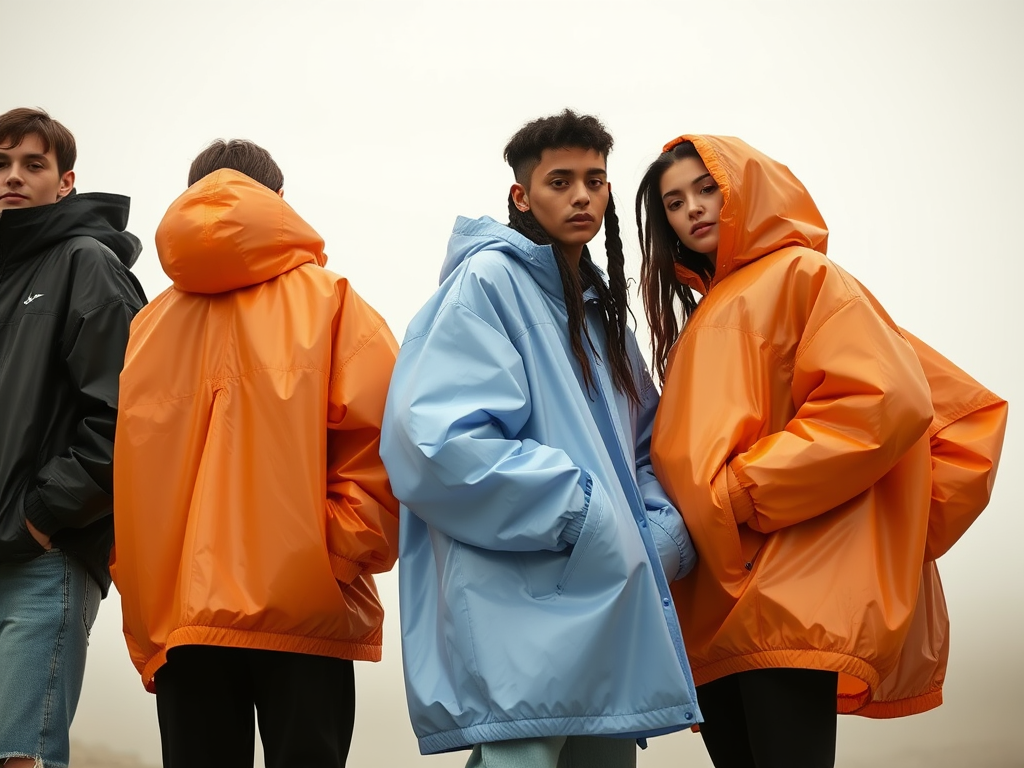Nylon, once a groundbreaking innovation, has woven itself into the fabric of our daily lives and fashion choices. More than just a synthetic material, it embodies a rich history of transformation and adaptation, showcasing how style evolves alongside cultural shifts. From its humble beginnings as a revolutionary alternative to silk to its status as a staple in various fashion sectors, nylon’s versatility is truly remarkable. This article explores its evolution, tracing the influence that distinct decades have had on the styles and trends we see today. Each era has left its mark on this resilient fabric, redefining how we perceive and wear nylon. Join us as we delve into the fascinating journey of nylon, highlighting pivotal moments that shaped its place in fashion history.
The Birth of Nylon: 1930s – 1940s

Introduced in 1935 by Wallace Carothers, nylon heralded a new era in textile production. It quickly became popular, particularly for its first commercial exploit: nylon stockings. The smooth feel and durability offered a compelling alternative to silk, particularly during World War II when silk was scarce. As women entered the workforce in unprecedented numbers, nylon stockings embodied a sense of empowerment and resilience. Later, these stockings would symbolize femininity and independence, rapidly gaining popularity in a post-war society. This initial introduction of nylon would serve as a catalyst for future innovations in fashion materials.
Nylon in the 1950s and 1960s

The 1950s and 1960s marked a transformative phase for nylon as it found its way into a variety of clothing items. Dresses, shirts, and outerwear began to showcase nylon’s adaptability, as designers sought durable fabrics that could maintain their shape and color. Icons such as Audrey Hepburn popularized nylon through elegant designs that captured the spirit of the era. As pop culture took center stage, nylon began to reflect the vibrant energy of music and youth movements. The “Nylon Age” emerged as a recognizable trend fueled by color and innovative designs, paving the way for subsequent fashion revolutions. Additionally, musicians and celebrities influenced the widespread acceptance of nylon in everyday wear, making it a fashion staple.
The 1970s: Nylon in Sports and Leisurewear
The 1970s saw nylon transition into the realm of athletic wear and leisure fashion. This era embraced comfort and functionality, leading to a surge in nylon’s popularity for sports gear and casual clothing. Tracksuits and windbreakers became ubiquitous, providing athletes with durable yet stylish options. The blend of performance and fashion resonated with a generation seeking to express themselves through active lifestyles. Nylon’s moisture-wicking properties began to be favored in outdoor gear, making it indispensable for adventurers and sports enthusiasts alike. The shift toward casual fashion saw nylon embraced in ways previously unimagined, as the line between sportswear and everyday attire blurred.
| Decade | Key Trends | Significant Styles |
|---|---|---|
| 1930s – 1940s | Nylon stockings, women’s empowerment | Silk alternatives, everyday wear |
| 1950s – 1960s | Diverse clothing range, pop culture | Elegant dresses, casual shirts |
| 1970s | Sports and leisurewear | Tracksuits, windbreakers |
| 1980s – 1990s | Streetwear innovations | Oversized jackets, hip-hop style |
| 2000s and beyond | Sustainability and functionality | Recycled nylon products |
The 1980s and 1990s: Nylon’s Explosion in Streetwear
The vibrant street culture of the 1980s and 1990s showcased nylon in an entirely new light. Oversized nylon jackets became quintessential elements of urban style, reflecting the bold identities of youth movements. Influenced heavily by hip-hop culture, these garments allowed for self-expression and creativity, marking nylon’s foray into the mainstream market. Fashion designers began experimenting with textures and patterns, further expanding nylon’s reach in high fashion runways. This unique blend of utility and trendiness made nylon a coveted fabric for both everyday wear and high-end collections. Over time, the material solidified its reputation as multifunctional, combining form with functionality.
The New Millennium: Sustainable Innovations and Modern Styles
As we entered the new millennium, a growing consciousness around environmental issues initiated a shift in fashion towards sustainability. Innovations emerged, leading to the development of recycled nylon, offering a more eco-friendly alternative without compromising quality. Modern designs began to reimagine nylon, prioritizing not only aesthetics but also environmental responsibility. Today, the fashion community is increasingly merging functionality with style, creating pieces that are as practical as they are fashionable. This transformational approach keeps nylon relevant in an ever-evolving market, with contemporary trends emphasizing versatility. The integration of sustainable practices in nylon production is one of the most promising prospects of modern fashion.
The Future of Nylon in Fashion
As we look to the future, predictions about nylon’s role in fashion remain optimistic. The fabric is expected to continue evolving, especially in response to technological advancements and consumer preferences for sustainability. Its adaptability has become a vital asset, allowing designers to experiment with innovative styles and applications. Nylon’s versatility is likely to influence next-generation designs, merging aesthetics with durability. This ongoing transformation reflects broader changes in fashion as the industry adapts to new challenges and values. The potential for the material to harness technology further suggests that nylon will remain a crucial component of fashion innovation.
Conclusion
Nylon’s journey through the decades illustrates its remarkable versatility and enduring presence in the fashion industry. From its inception as a revolutionary textile to its integration into contemporary sustainability practices, nylon has proven resilient against the tests of time. Each decade has enriched its legacy, influencing fashion trends and popular culture in profound ways. As we adapt to modern challenges, nylon will continue to thrive, championing new trends that blend functionality with style. The ongoing evolution of this iconic fabric serves as a testament to its significance in shaping the future of textile design.
Frequently Asked Questions
- What is nylon, and what are its properties? Nylon is a synthetic polymer known for its strength, elasticity, and resistance to wear and tear. It is lightweight, quick-drying, and often used in clothing and accessories.
- How has nylon evolved as a material in fashion? Originally introduced for stockings, nylon has evolved into a versatile material used in various clothing styles, from athletic wear to high fashion, adapting to cultural trends over time.
- Why was nylon popular during the mid-20th century? During the 1930s and 1940s, nylon provided an affordable alternative to silk, especially in stockings. Its durability and versatility made it a staple in women’s fashion during and after World War II.
- What are some contemporary uses of nylon today? Today, nylon is used in diverse applications ranging from outdoor gear and athletic wear to everyday clothing and accessories, highlighting its adaptability and resilience.
- Is nylon considered a sustainable material? Traditional nylon production can be environmentally taxing; however, advancements in recycling technologies are making recycled nylon more sustainable and eco-friendly.
